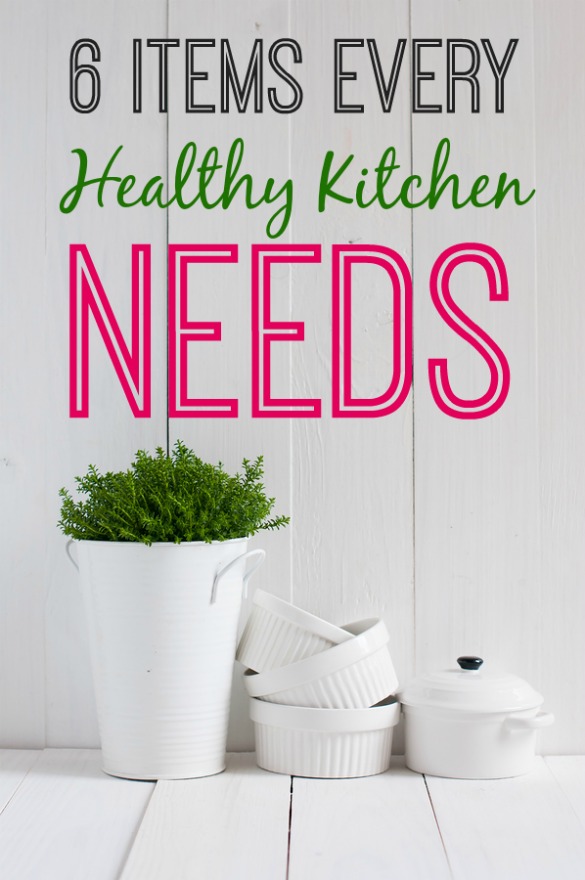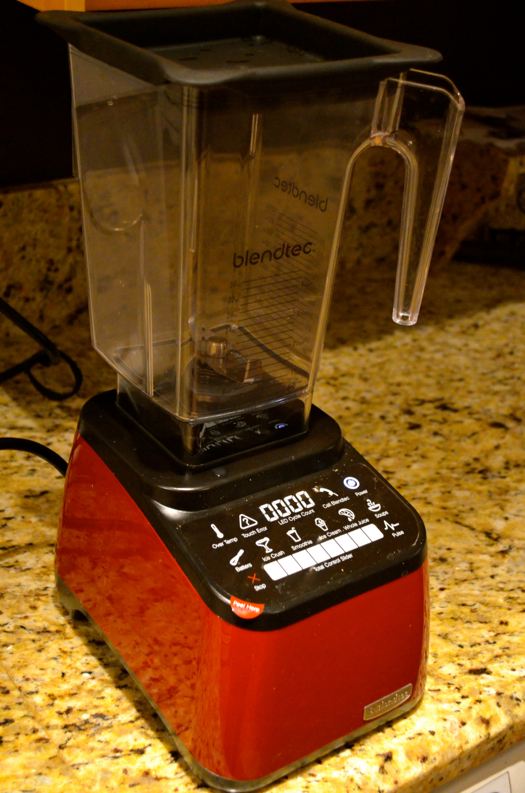6 Items Every Healthy Kitchen Needs
If you’re like me, you probably built your first kitchen the old-fashioned way: some items smuggled out of mom’s basement, a few more pieces of equipment cobbled from thrift stores and rummage sales, and a lot of pieces that pulled double (and triple) duty.
This ragtag approach to stocking my healthy kitchen served me well for many years. But I’m not fresh out of college anymore, and frankly, I’m kind of sick of cooking with crappy stuff. My cheap nonstick pans from Goodwill are chipping on the bottom (prompting my mother to joke how Teflon is my secret ingredient to “make everything go down smooth”) and every time I cut food, I snip my finger on a knife that slips instead of slices. I just want to dice a freakin’ onion, for crying out loud — why can’t it be as easy as the chefs make it look on the Food Network?
Good kitchen equipment not only makes cooking easier — it also makes it safer (making this a fab hack for Fit Bottomed Hack Week!). Dull knives slip on your food, slicing your fingers; bad pans can release chemicals into your food; unsanitary or malfunctioning equipment can lead to a host of problems.
The emphasis for every Fit Bottomed Kitchen, then, should be on quality equipment. If it sounds like you need to replace all of your equipment, fear not — you can accomplish many healthy meals with very few pieces of equipment. Here’s your must-have list for a healthy kitchen!

How to Build Your Own Healthy Kitchen Needs
1. Good knives. You don’t need a huge set of knives in a home kitchen, says Chris Costa, director of product management for Victorinox Swiss Army. In fact, you can get away with having just three knives in your kitchen:
Paring knife: This versatile cutting tool with a short blade is great for small, precision cuts where control is essential. You can use it for seeding jalapeños, mincing shallots, slicing avocadoes, trimming beans and coring tomatoes.
Chef’s knife: An all-purpose chef’s knife is an essential tool in every kitchen. Perfectly suited for dicing onions, chopping herbs, crushing garlic, slicing meats of all varieties and shredding cabbage, its versatility makes it your go-to knife.
Bread knife: Although called a “bread knife,” it can also easily slice sandwiches as well as fruits that easily bruise. This knife is also perfect for making scalloped edge cuts through a harder crust or peel without squashing the tender interior.

2. Two cutting boards. To reduce the risk of cross-contamination, your healthy kitchen should have two cutting boards. The first should be used for fruits, veggies, bread and anything safe to be eaten raw; the second, for meats, eggs, poultry or fish.
Ideally, your cutting boards will be made of a non-porous, dishwasher-safe material, like plastic or glass, making sanitation a cinch. Also consider getting two different colors of cutting boards to help eliminate confusion. Since meat isn’t cooked often in my house, the “meat” board is a small white plastic slab that is easy to tuck away in a cabinet after sanitizing. The “veggie” board, however, is a huge green behemoth of plastic that gets a lot of use — and a primo spot on the countertop.
3. A heavy pan and stockpot. The heavier the pan, the more evenly it will conduct heat. Though cast iron is a great option, it doesn’t always do well with acidic foods like tomatoes. Stainless steel pans are also good for conducting heat, but usually require added oils to prevent sticking.
Your best bet is to find a quality nonstick set with a coating that won’t crack, chip or peel. We like Calphalon Contemporary — the 12-inch fry pan goes from stovetop to oven (hello, frittatas!), and the multipot comes with both a pasta insert and a steamer basket that’s perfect for fish and veggies. The best part? They’re all dishwasher safe. As someone who always loses in the paper-rock-scissors contest to decide who washes the pans, I’m a big fan of dishwasher safe in my healthy kitchen.

4. Bakeware. Unless you’re a professional baker, you can likely get away with keeping a short list of baking items on hand: cookie sheets (which can double as roasting pans), a 9-inch by 13-inch ceramic dish, and cupcake tin for muffins, mini omelets, and … well, cupcakes. Because cupcakes are essential even in a healthy kitchen, right? Right.
5. A strong blender. In the four years Neil and I have lived together, we’ve gone through six blenders. If you’re into healthy eating, you can probably relate — blenders are an essential tool in creating everything from smoothies to pesto sauces, so frequent use can cause the motor to burn out mere months after purchase.
After totaling up the amount we spent on replacing more “affordable” options of this appliance, I decided to invest in a good blender with a lifetime warranty. The two “big names” in quality blenders are Vitamix and Blendtec, and the loyalty of the customers of each brand is intense. Based on the way people effuse about their particular blender, you’d think their smoothies came out laced with gold dust.
There’s a reason why people are so enthusiastic about these blenders, though — they work better than anything else on the market. Their motors are powerful, allowing them to emulsify without additional liquids. They also blend consistently — no more ice chunks or air pockets where the blade spins but nothing gets incorporated.
The best part about having a powerful motor is that it can handle a lot more work beyond the basic smoothie and/or margaritas. I use my Blendtec for making nut butters, dough and soups. Yes, soup — there’s a setting on the appliance that allows you to put all your ingredients in the blender cold, yet magically creates hot soup in just minutes. Pretty rad, eh?
6. Favorite gadgets. I can’t live without a spoontula. You know what I’m talking about, right? It’s that silicone spatula-slash-spoon contraption you can find in most kitchenware aisles. I use mine every day — sometimes multiple times a day — for everything from sautéing to spreading.
Whisks, tongs, measuring cups and microplanes also see some heavy playing time in my healthy kitchen. And I learned the hard way that safety equipment, like a fire extinguisher, is a must.
There are a lot of gadgets wanting to take up some real estate in your healthy kitchen. As you become more comfortable with your cooking style, you’ll note what you do — and don’t — really need. The list will vary from person to person.
The $15 apple corer/slicer I absolutely had to have when I laid eyes on it in the store turned out to be good at nothing more than taking up space in a drawer; however, after three seasons of trying to pit cherries with a paper clip, I decided I really wanted a cherry pitting gun. At first, I was concerned it’d meet the same fate as the apple corer, but my cherry pitter gets used every single day during stone fruit season, making it a gadget worth its $5 price tag.

It doesn’t take a lot of equipment to whip up delicious, healthy meals! Stock your healthy kitchen with these Fit Bottomed essentials, and you’ll be good to go.
What items are “must-haves” in your kitchen? —Susan


Comments
I would like to see you write an article called: ‘Why are you in my kitchen’. That would seem hilarious! Further I keep tumbling back on to your website which i love! Keep up the good work! ^_^y
Comments are closed.